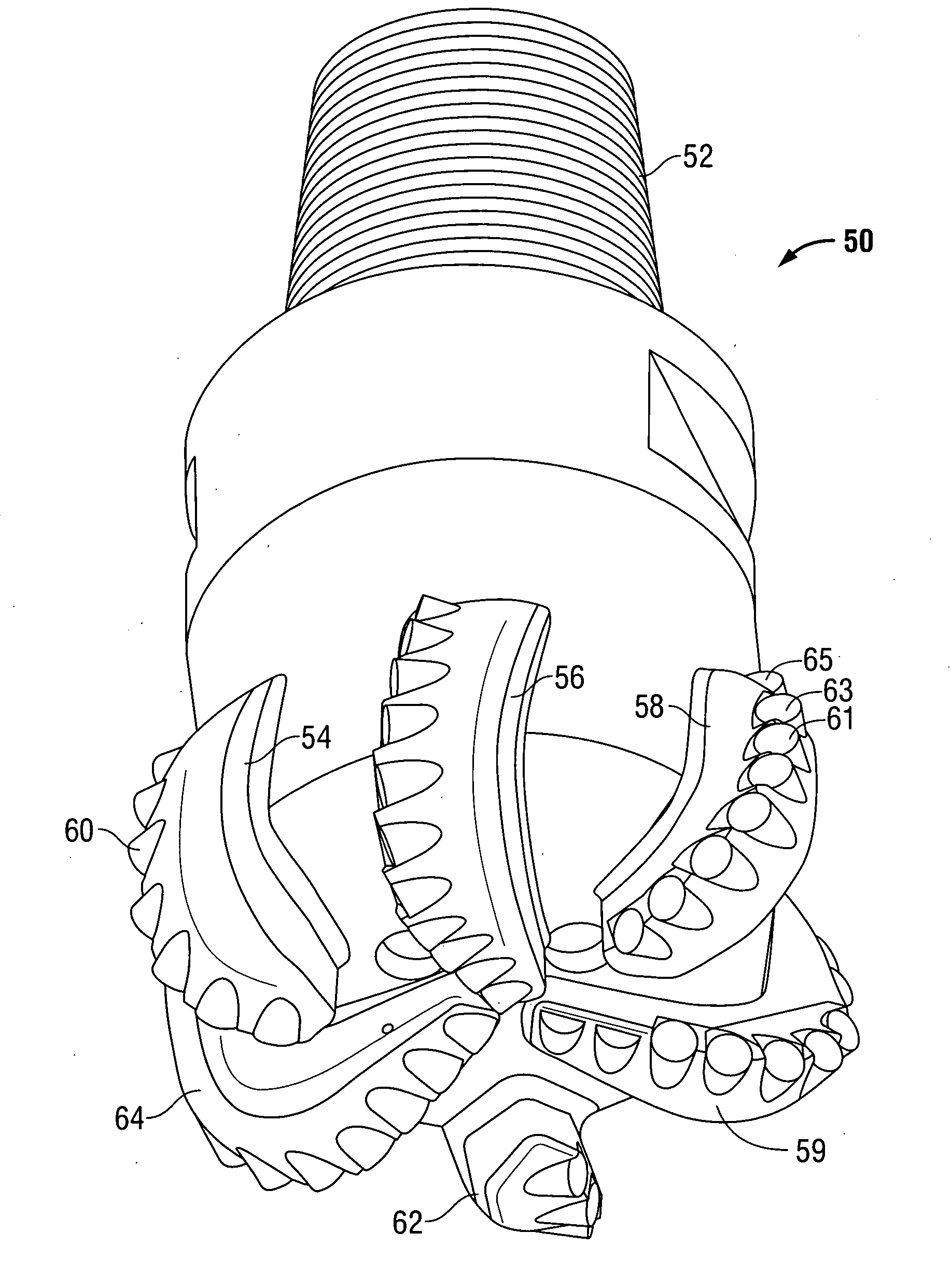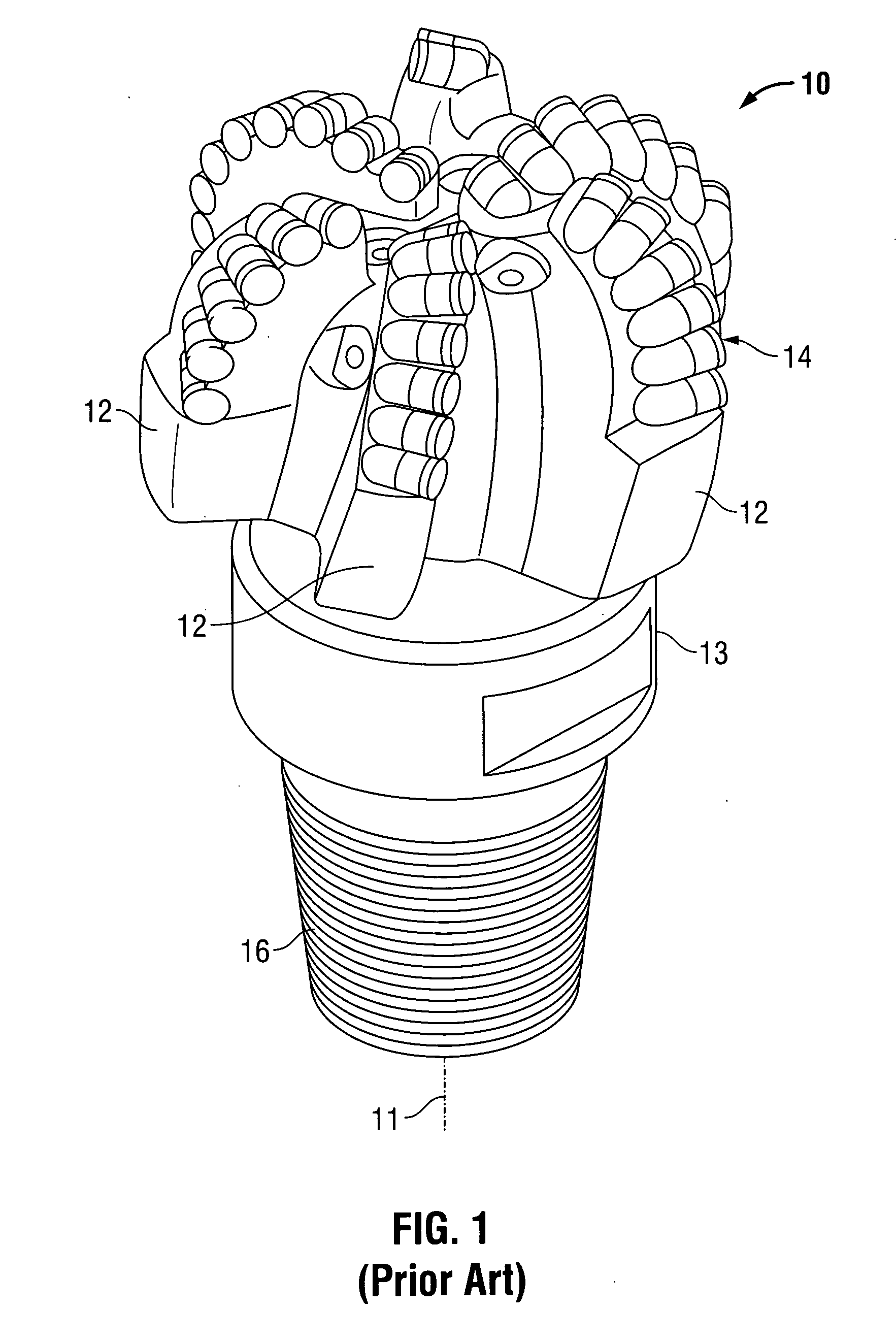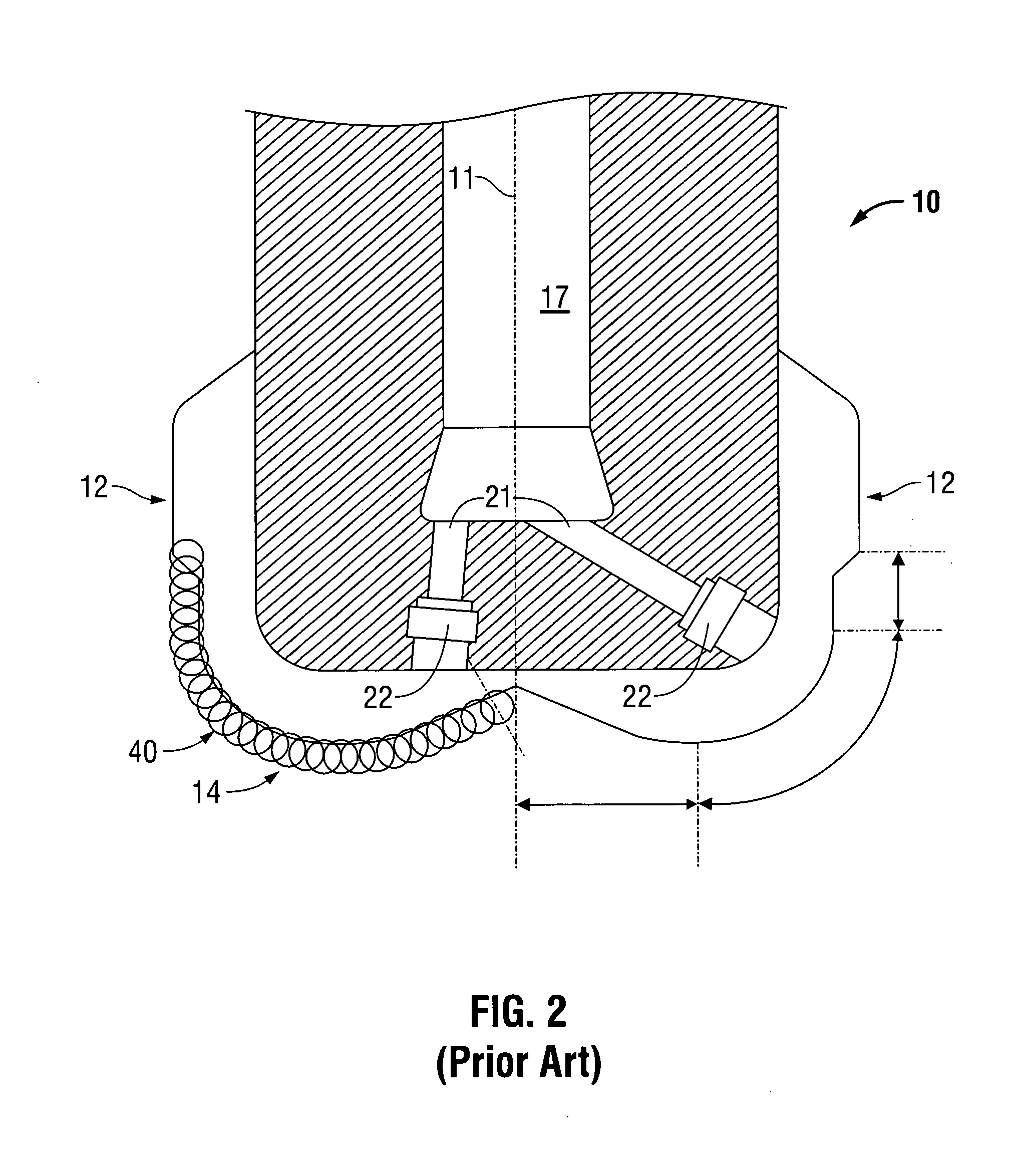Drill bit having functional articulation to drill boreholes in earth formations in all directions
a drilling bit and functional technology, applied in the direction of drilling machines, drilling methods, directional drilling, etc., can solve the problems of poor lateral response, limited directional drilling capabilities, and inability to reliably allow controlled drilling, so as to prevent lateral cutting, restrict the diameter of the borehole, and limit the length of the cutting surface
- Summary
- Abstract
- Description
- Claims
- Application Information
AI Technical Summary
Benefits of technology
Problems solved by technology
Method used
Image
Examples
Embodiment Construction
[0034]Drill bits manufactured and used according to the preferred embodiments of the present invention, being designed to enable functional articulation between the drill bit and the tubular drillstring, are designed to drill in all directions, including forward (downward) in a vertical direction, horizontally, laterally (360°), upward (in a vertical direction,) and at all angels therebetween. This major advance in drill bit technology is accomplished, in part, by using cutters having cutting surfaces set in the flank of the bit, in which the backrake angles of such flank-set cutter ing surfaces each provide a drilling edge via a relief angle produced by the backrake angle.
[0035]FIG. 3 depicts a pictorial view of an embodiment of a drill bit 50 according to the present invention. The drill bit 50 is shown having a threaded pin end 52 for engaging a drill string (not illustrated). The drill bit 50 is further shown having a plurality of blades 54, 56, 58, 59, 62, and 64 disposed there...
PUM
 Login to View More
Login to View More Abstract
Description
Claims
Application Information
 Login to View More
Login to View More - R&D
- Intellectual Property
- Life Sciences
- Materials
- Tech Scout
- Unparalleled Data Quality
- Higher Quality Content
- 60% Fewer Hallucinations
Browse by: Latest US Patents, China's latest patents, Technical Efficacy Thesaurus, Application Domain, Technology Topic, Popular Technical Reports.
© 2025 PatSnap. All rights reserved.Legal|Privacy policy|Modern Slavery Act Transparency Statement|Sitemap|About US| Contact US: help@patsnap.com



